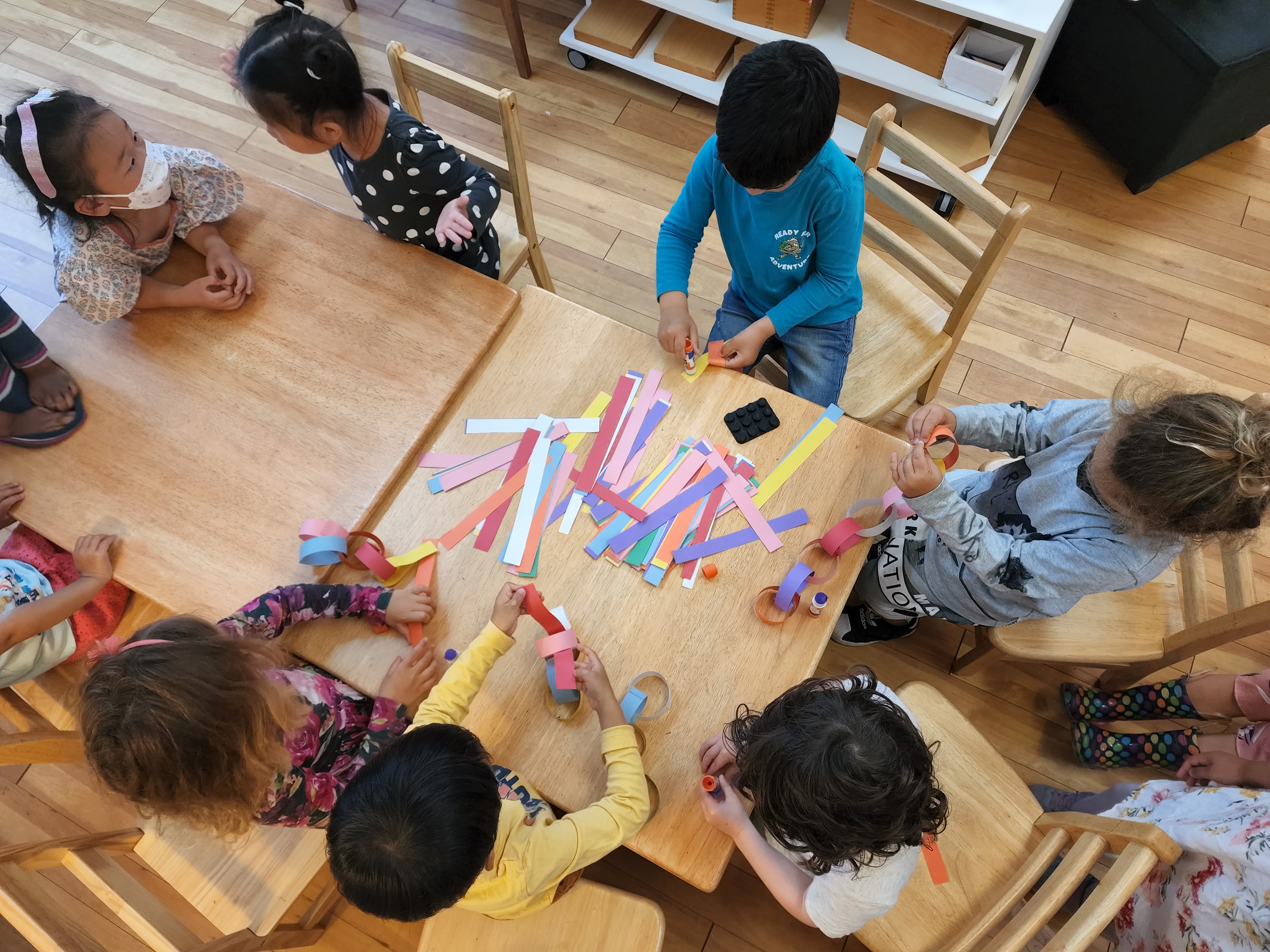(858) 759-0631
What a Child Absorbs
During the first years of life, the child will absorb, like a sponge, whatever is in the environment: ugliness or beauty, coarse behavior or gentleness, good or bad language. As parents, we are the first models of what it means to be human. If our children are in a childcare setting or an infant community we must exact the same high standards.
Quality and beauty of the environment and books and materials are very important in attracting, satisfying, and keeping the attention of the child. If the child is exposed to beautiful mobiles, posters, rattles, and toys, made of wood and other natural products, as an adult she will help create a world with the same high standards.
Toys, rattles, puzzles, tables, and chairs—made of wood—develop an appreciation for nature and quality and protect the child from unsafe chemicals that are found in many synthetic materials. Pictures on the wall hung at the eye-level of the child, can be beautiful, framed art prints, or simple posters. All of us have been influenced by our first environment, and nothing helps create beauty in the world as much as giving beauty to the very young.
Toy Storage
Rather than tossing toys into large toy boxes, it is more satisfying for the child to keep them neatly on shelves, hung on hooks, and kept ready to work with on wooden trays or small baskets. This also makes putting away much more logical and enjoyable. The Chinese art of placement, Feng Shui, teaches that clutter, even hidden under a bed or piled on the top of bookcases, can cause stress.
The Outside Environment
Sometimes we forget that daily life was first carried out in the outdoors, people used to come into their homes only for shelter from the elements. This is still the instinct of the child. In the first days of life, just a breath of fresh air and a look at the tree branches moving in the wind each day is sufficient. Soon a daily walk in the baby carrier or stroller, and before you know it, walks led by the child, where each new thing—cracks in the sidewalk, parades of ants, puddles, brick walls, weeds, and thistles—many details which we as adults previously overlooked, will enchant the child and make a short walk into a long drawn out discovery. Sometimes a "walk to the park" can take an hour, and one may not even get past the front sidewalk. It is very good for us adults to slow down, forget our plans, and follow the child as he discovers, smells, sees, hears, and touches the outside world. Welcome the child to your outside work—washing the car, working in the garden, whatever you can do outside instead of inside- there is always some little part of the real work that a child can do. Try to create an outside area where the child can not only do outside activities such as playing in a sandbox but activities he would be doing inside, such as washing his hands or the dishes, looking at books, and doing a puzzle.
Age 3-6
Children at this age often prefer to work on the floor instead of at a table—on rugs or pieces of carpet that can be rolled up or put out of the way when not in use. This marks the workspace just as would a table.
Toys, books, and materials can be attractively arranged on trays and baskets, on natural wood or white shelves according to language, math, geography, history, science, music, and art. Each object has a special, permanent place so that children know where to find it and where to put it away for the next person when finished. Tables and chairs that support proper posture are important at every age.
-Primary Teacher
(Shared with permission of The Joyful Child Montessori Company: www.thejoyfulchild.us)

